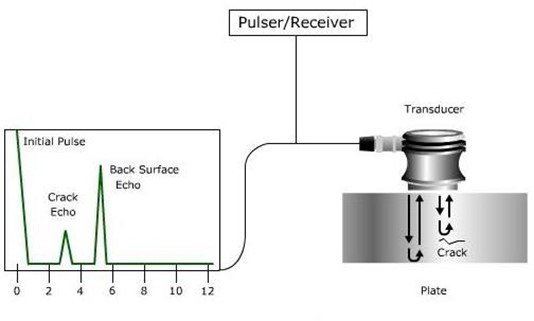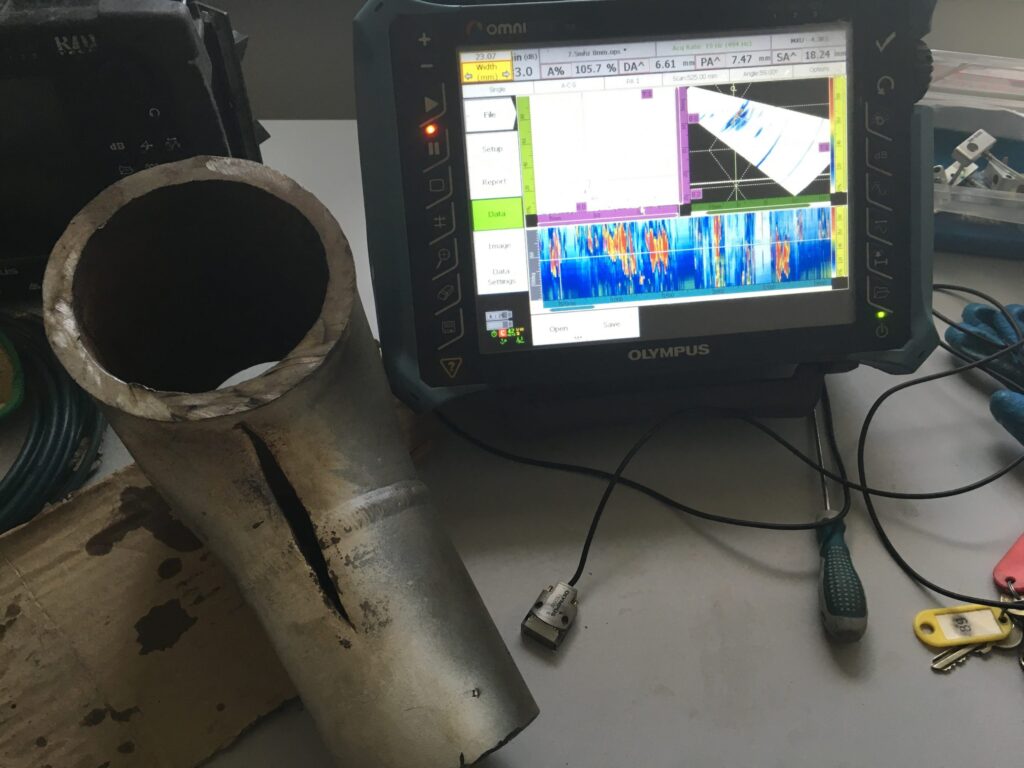NDT Technician Level II Salary & Compensation

Employees in the nondestructive testing (NDT) field have many opportunities to grow in their careers. They may pursue higher education after receiving their high school diploma (or an equivalent) to gain more connections or research experience, or they may simply move to a higher-paying job or to a larger company.
NDT technicians who have gained some work experience or would like to have more responsibility on-the-job may choose to become certified as a Level II technician. In 2018, Level II technicians made up around 31% of all full-time NDT employees and are expected to become more in-demand as the industry is expected to grow to a value of $23.1 billion by 2024.
NDT Technician level 2 certification, explained
Much of the requirements for Level II technicians are similar to the Level I requirements. Level II technicians, however, are usually required to complete more training hours and are given more responsibilities on the job. In some cases, they may serve as a trainer or supervisor for Level I technicians.
In addition to the responsibilities given to a Level I technician, Level II technicians are able to set up and calibrate inspection equipment, conduct inspections and analyze and interpret results. Once a technician moves up to a Level II certification, they must be able to perform all of their duties without any supervision.
Level IIs may also serve as supervisors for Level I or Level I limited technicians, which are both required to be supervised at all times while on the job. They are able to provide training for lower-level technicians as they are familiar with the inspection method and all related codes, standards, specifications and limitations.
Nondestructive testing is cost-effective and efficient, and NDT technicians are in high demand in a wide variety of industries. The majority of Level II technicians are employed in either the aerospace (38%) or the petrochemical (27%) industries. Other employees work in utility & power, construction and defense industries or laboratory environments.
Eligibility/Education
Although Level II technicians require more training hours and have greater responsibilities than Level Is, they have roughly the same eligibility and education standards as the lower level.
The number of training hours that Level IIs are required to have before earning their certification changes depending on the level of higher education they have received; in most cases, those who have completed at least two years of higher education in engineering or science have a lower number of required training hours (acoustic emission and neutron radiography require the same number of hours no matter the education level).
Although a college or technical school education is not required to become certified as an NDT technician at any level, some technicians may choose to pursue their training at a certified educational institution. They can also do their training at vocational schools, commercial training companies, individual company training departments or through the military.
Level II technicians must also reach a required number of work experience hours, which must be completed in the inspection method in which the candidate is going to be certified and under the supervision of a qualified instructor. For Level IIs, this experience can range anywhere from 140 hours (visual inspection) to 1,680 hours (neutron radiography and vibration analysis).
All qualifying work experience must be completed within a timeline specified by the certification program. In general, Level II technicians are given more time to complete their work experience hours than a Level I technician would have, but Level IIs are also, in most cases, expected to have more work experience than a Level I.
The required time frames for Level II work experience are divided into months cover a range of time. For example, Level II technicians looking to become certified in liquid penetrant or visual inspection are given between one and six months to complete their work experience, while those looking for a certification in neutron radiography or vibration analysis are given between 12 and 72 months.
Once NDT technicians have the required work experience and training hours, they are qualified to take their certification exams. Exams are usually administered by a Level III technician and are provided by a specific company. Technicians are expected to score at least a 70 on each part of the exam, with an 80 composite score.
Level II technicians have three separate exams before they earn their certification: a basic exam, which covers the principles associated with their NDT inspection method, a specific exam, which covers specifications, techniques, equipment and procedures specific to their employer, and a method exam, which is a demonstrative exam showing the technician’s familiarity with their inspection method and ability to carry out their responsibilities.
In addition to written and method exams, all NDT technicians must pass a vision test, verifying that they have good near vision and color vision to be able to see any imperfections in a material. Both natural and corrected vision are acceptable, but the technician must be able to see up close and differentiate between contrasting colors or shades of gray.
Salary
Due to their added responsibilities, Level II technicians can make a higher average salary than Level I technicians, although not quite as much as Level IIIs. In 2018, the average salary for a full-time Level II technician was around $109,133, or around $37.05 per hour at an hourly rate.
The majority of Level II technicians (90%) are employed full-time, although only 15% of full-time employees earn an annual salary. 75% of Level II employees earned an hourly rate in 2018.
Full-time NDT technicians often have added benefits; nearly all full-time employees have a 401(k) retirement savings plan and paid vacation time. More than 80% of full-time employees also have dental, medical and life insurance, and more than 65% of employees have disability insurance and educational assistance.
Most Level II technicians are employed full-time, but around 10% are independent contractors. On average, contractors make $46.10 per hour, working 10.5 months out of the year with an average of 25 weeks on an assignment. Contractors also work around 19 overtime hours each week.
Overall, Level II technicians can look forward to salary growth and solid job opportunities. The average salary for full-time employees increased over 50% between 2009 and 2018, and around 93% of independent contractors are confident about finding their next project.
Career development and growth
When a Level II technician is looking to advance in their career, they may decide to return to school to take more classes, possibly learning about new and changing technologies within their field or gaining more career connections, but a Level II certification is also a great stepping stone to become a Level III.
Unlike a Level I or II certification, the Level III certification requires candidates to have at least one year of work experience comparable to the responsibilities given to a Level II, depending on the level of higher education they have received.
Those who have received a four-year degree are only required to have one year of experience, while those with a two-year degree must have at least two years of experience. Candidates who have not pursued higher education after receiving a high school diploma or equivalent must have at least four years of work experience.
Once a technician becomes qualified as a Level III, they have a wide variety of job opportunities available to them. Level III technicians have the knowledge and skill set needed to train and supervise Level I and II technicians. They may also pursue research within the NDT field, own a testing laboratory, or work as a consultant, administrator or manager.
Apart from the added job responsibilities, Level III technicians also make a higher average salary than Level IIs. Full-time Level III technicians make an average of $125,821 per year, with 74% of employees earning an annual salary. Full-time Level IIIs are also more likely to have benefits in most cases, with more than 75% of technicians having a retirement savings plan, insurance, paid vacation time and educational assistance.
A Level II technician may also choose to return to school and take more classes. Some colleges have NDT-specific programs that can provide both education and training to prepare students for their certification exams; some technicians may choose to become certified in more than one inspection method to make themselves more competitive in the job search.
Formal education programs allow both current and future technicians to connect with others in their field, providing a wealth of networking opportunities. Small class sizes help students to form relationships with each other and with their professors, allowing students to gain more direct, in-depth training and solidifying their place within the NDT community.
Overall, the NDT industry is growing fairly quickly and is expected to be worth more than $23 billion by 2023, growing 6.7% within five years (the industry was worth $15.67 billion in 2018). The industry’s unemployment rate lies below the U.S. average of 3.8% at 3.6%.
Source: https://surehand.com/blog/inspection/ndt-level-2-salary/




